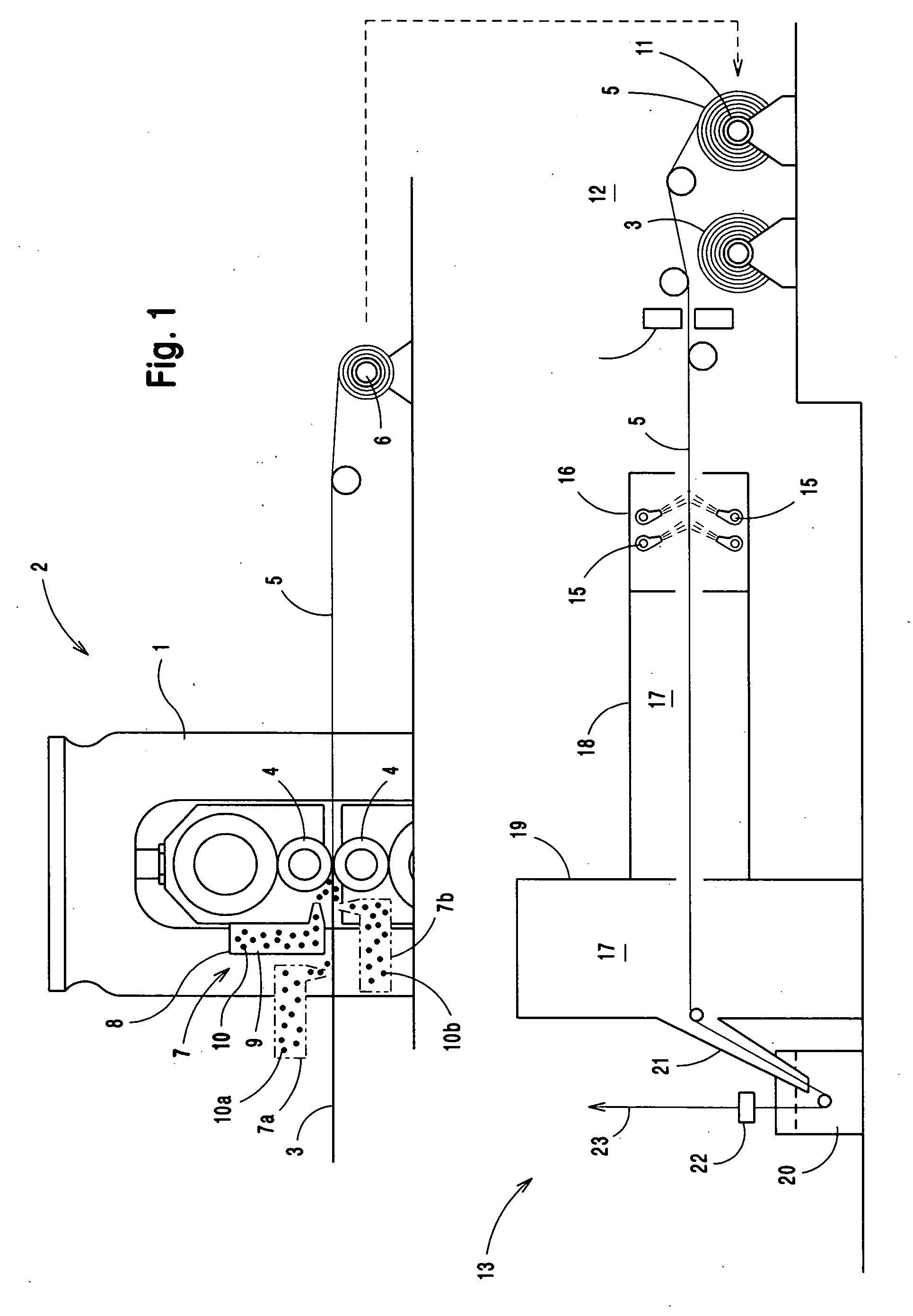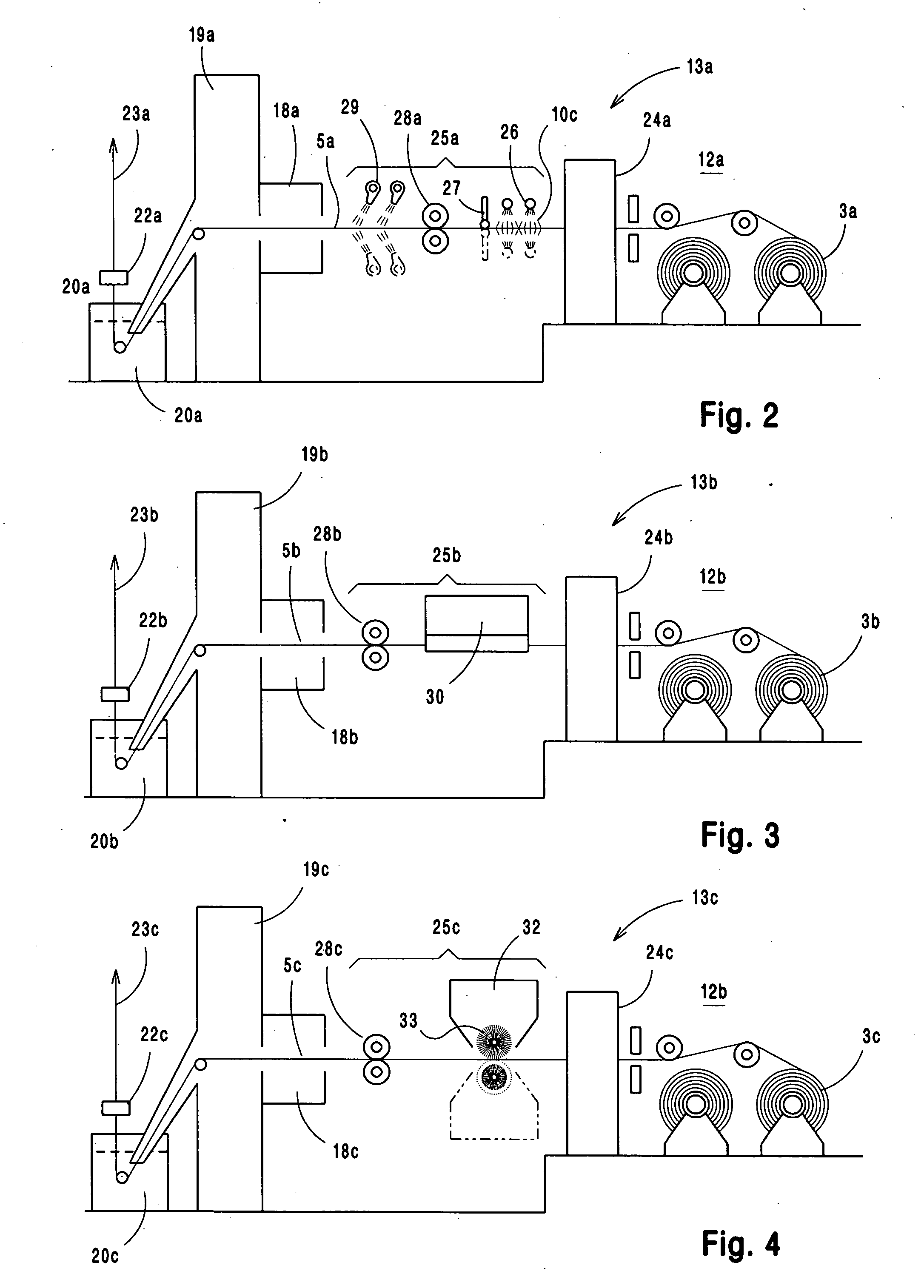Process for applying a metallic coating, an intermediate coated product, and a finish coated product
a technology of coating and coating product, applied in the direction of coating, transportation and packaging, cores/yokes, etc., can solve the problems of inability to make conventional aluminum-zinc coatings, galvalume® coatings, and inability to meet the requirements of coating line production, so as to reduce the size of the spangle facet
- Summary
- Abstract
- Description
- Claims
- Application Information
AI Technical Summary
Benefits of technology
Problems solved by technology
Method used
Image
Examples
Embodiment Construction
[0019] Referring to the drawings, FIG. 1 shows the preferred pre-treatment process of the present invention applying grain-refining particles to steel sheet being rolled in a cold-reduction mill. Cold-reduction is a process that reduces the thickness of steel sheet in a series of passes through a single-stand reversing mill, or a series of continuous passes through an arrangement of spaced apart mill stands in a tandem mill. During cold rolling, the reduction of the steel sheet thickness at high speed generates considerable heat and raises the temperature of both the sheet and the work rolls. The generated heat is usually dissipated with a flood lubrication system that directs a rolling solution that may include, for example, tallow based or synthetic oil, a mixture of oils, or a detergent in small streams or jets against the rolls and steel sheet surface. Flood lubrication systems are able to maintain the work temperature of the steel sheet at about 65° to 120° C. (150° to 250° F.)...
PUM
| Property | Measurement | Unit |
|---|---|---|
| spangle facet size | aaaaa | aaaaa |
| spangle facet size | aaaaa | aaaaa |
| spangle facet size | aaaaa | aaaaa |
Abstract
Description
Claims
Application Information
 Login to View More
Login to View More - R&D
- Intellectual Property
- Life Sciences
- Materials
- Tech Scout
- Unparalleled Data Quality
- Higher Quality Content
- 60% Fewer Hallucinations
Browse by: Latest US Patents, China's latest patents, Technical Efficacy Thesaurus, Application Domain, Technology Topic, Popular Technical Reports.
© 2025 PatSnap. All rights reserved.Legal|Privacy policy|Modern Slavery Act Transparency Statement|Sitemap|About US| Contact US: help@patsnap.com



